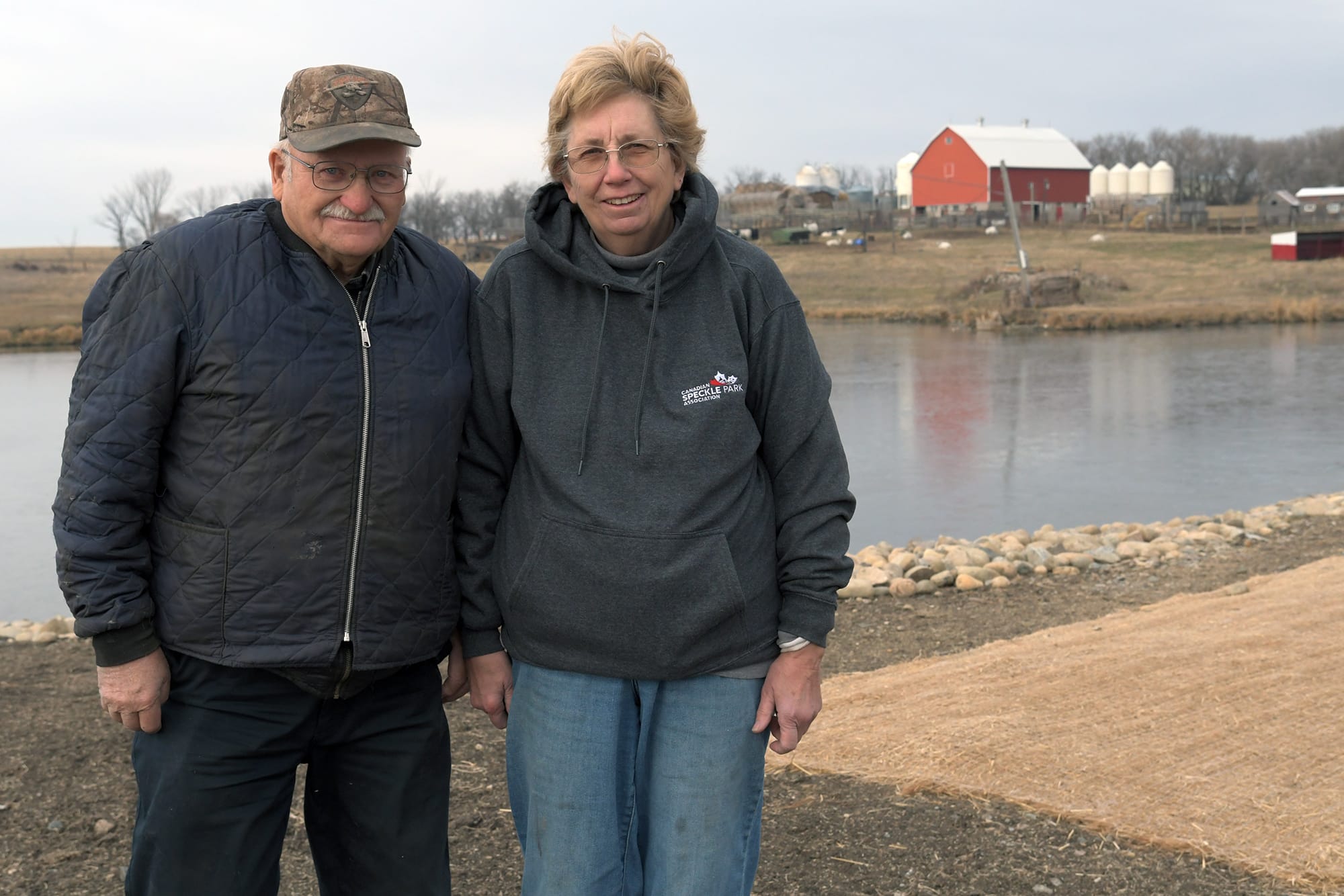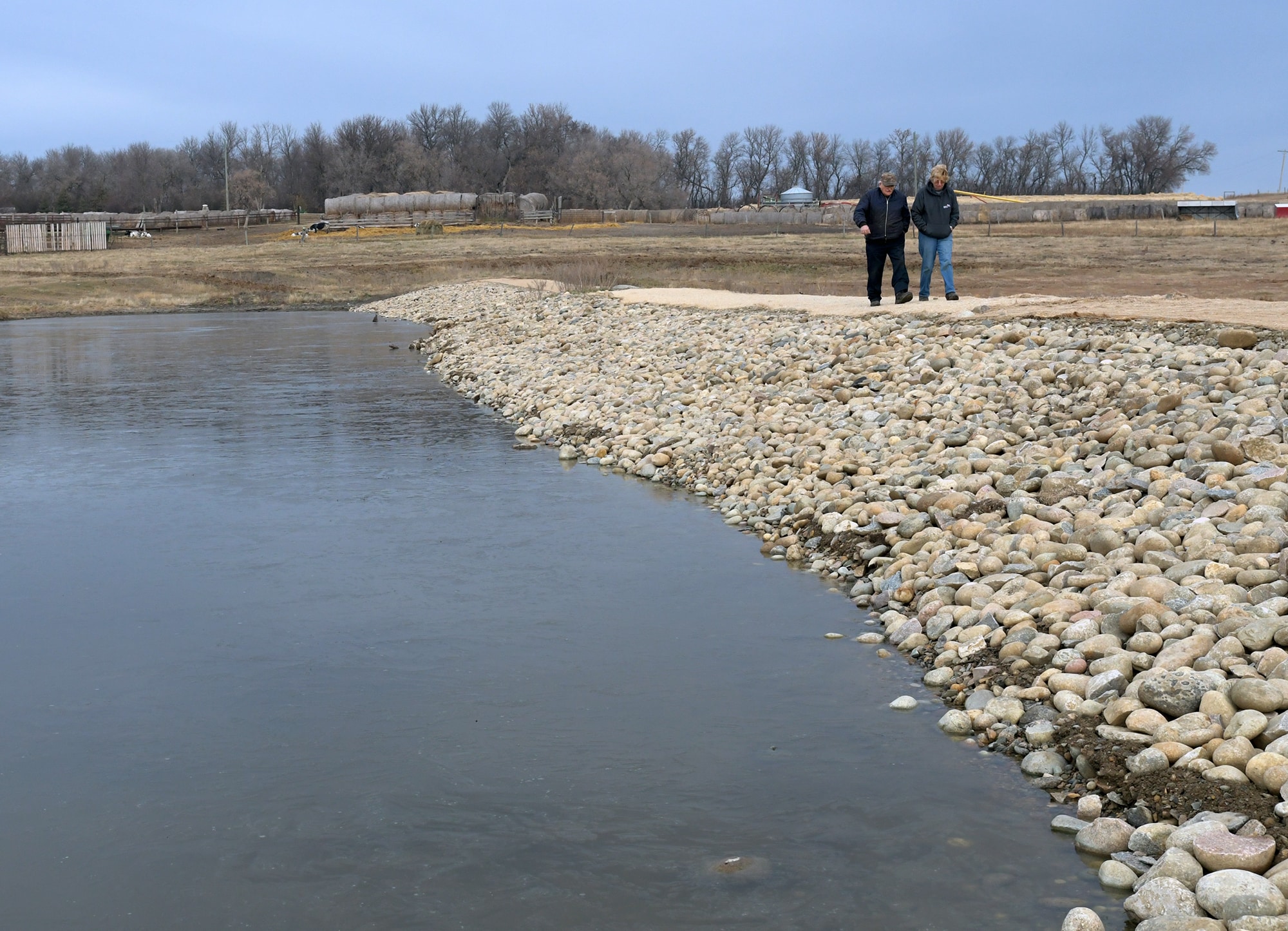Story
January 23, 2025
Water on the farm: a 66-year success story
Manitoba farmer recalls Ducks Unlimited Canada project

As a young boy in the 1950s, Cam Dodds watched Ducks Unlimited Canada (DUC) build a dam on the family farm near Kenton MB. In the fall of 2024, he saw that same life-giving dam refurbished.
“Without water, you just don’t have nothing,” says Dodds, who operates Hales Creek Farm with his partner Bea Janssens. “It’s just been a great thing to be able to have that resource there when we need it. It’s important.”
The 450-foot earthen dam is clearly visible from the front window of Dodd’s farmhouse, past the cattle pens, hay bales and barn buildings; a short walk from the bronze plaque celebrating his ancestors who came from Ontario in 1881 to establish the farm.
This has been home for me for all my life. I guess farming is in your blood. It’s in your heritage. Every year is a challenge but some years are better than others. And a farmer is always trying to make improvements. He wants to improve his livestock. He wants to improve his land, his cattle, and that's what keeps you interested.
Dodds says his family first dammed the creek running through their property in 1900, to provide water for both livestock and household use.
“There’s no real groundwater here. They tried many times drilling wells but, in this general area, groundwater is just not very easily found,” says Dodds, who has journals and diaries from the early settlers. “It was must have been a tremendous amount of work for the family to accomplish that. But the idea was to source themselves a good supply of water.”
DUC got involved in 1958, rebuilding the existing dam to better serve the farm while also providing new habitat for waterfowl. Workers towed their own trailers to stay on-site during construction and the project left an indelible mark on Dodds.
“I was just a seven-year-old kid so anything like this would be really interesting. I remember the boys taking me for a ride on the heavy equipment when they were doing the excavating!”
Hear the entire story on DUC’s podcast on the Manitoba page at ag.ducks.ca.

The dam is among DUC’s 240 ‘legacy’ wetland projects in Manitoba, constructed in the first 50 years after the conservation group began operations in 1938. Those wetlands cover a combined area that is twice as large as the City of Winnipeg.
In 2024, DUC spent over $1.5 million to repair Manitoba wetland control structures, including the dam on the Dodds farm. Ongoing wave activity, runoff and cattle traffic on the earthen dam had degraded its condition since the last rebuild in 1983.
The Dodds wetland project is a great example of long-term agricultural sustainability working in tandem with habitat conservation. This area has very little permanent waterbodies. The DUC rebuild in 1983 added a foot of water and three more acres of wetland. This increased the water availability for livestock and increased habitat acres on the landscape.
Greer says major repairs in 2024 included Siglunes Creek near Ashern in the Interlake, the start of reconstruction at Pope dam near Hamiota and a $1 million build at Proven Lake, a DUC legacy project which preserves 4,800 acres within one of North America’s most productive waterfowl breeding areas.
“DUC continues to manage and maintain the 240 legacy projects across Manitoba,” notes Greer. “With ever-increasing engineering standards and rising costs for equipment and materials, DUC is seeking innovative funding and partnership options to manage these vital wetland acres for habitat and landowners.”
As Manitoba’s oldest and largest conservation group, DUC uses sound science and partners with government, industry, non-profit organizations, Indigenous Peoples and landowners to conserve wetlands that are critical to waterfowl, wildlife and the environment.
DUC has worked with over 3,000 Manitoba landowners since 1938 to conserve more than 711,000 acres (287,731 hectares). Call 204-285-9779 to find out about DUC programs and financial incentives or visit ag.ducks.ca/programs/manitoba/.
